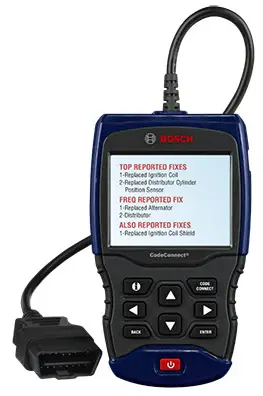What is OBD or OnBoard Diagnostics?
In this article, we, in particular, explain the functions of OBD2. The term OBD stands for Onboard Diagnostics. OBD or “OnBoard Diagnostics” is the vehicle’s self-diagnostic system. It monitors and reports the status of various vehicle subsystems and sensors. It also provides real-time data and a standardized sequence for diagnostic trouble codes for automotive vehicles. The system consists of a code reader & scanner with embedded software and a small adapter that connects to the OBD monitor. You need an onboard diagnostic system because the diagnostic parameters change when the vehicle is in motion than when it is still.
Features:
The diagnostic software is easy to use. With it, among other things, you can monitor engine temperature and fuel consumption in real-time. Besides, you can find out more information about the malfunction indicator light using the Onboard Diagnostics. You can identify the issue with your vehicle and deal with them beforehand. You can learn to drive more economically and get to know your car better. OBD2 is a more sophisticated and advanced mechanism.

Elements of OBD2:
Furthermore, OBD has several key elements that are detailed in ISO and SAE standards. OBD2 is more sophisticated and advanced mechanism incorporated in a diagnostic unit. You can break down OBD2 standards into several key elements including the protection of clean emission components. It includes security of engine control unit, scan tool interface and communication requirements and OBD diagnostic connector specifications.
Functions:
Actually, with the OBD2 protocol a technician can use a code reader or an OBD2 scanner to identify the underlying issues behind malfunctions. However, OBD2 is also relevant as a source of real-time vehicle data for use in fields such as fleet management, fuel optimization, CAN sniffing and more. Thus, OBD is a vital topic in automotive data logging from diagnostics to fleet optimization.
Advantages:
- You can conduct the tests while the vehicle is moving.
- It checks the state of functions performed by the sensors, subsystems and other vehicle components.
- It records the errors reported by the components in the form of Diagnostic Trouble Codes (DTCs)
- You can see the test results on the vehicle’s dashboard in the form of Malfunction Indicator Light or an OBD Tester Tool.
- The error code helps the technicians to pin-point the issue and fix it.
Bosch, Scan D, Modaxe and BAFX are some of the OBD scanner makers in the world.
Watch how the OBD system works here:
Read More: What is cylinder deactivation technology?>>
